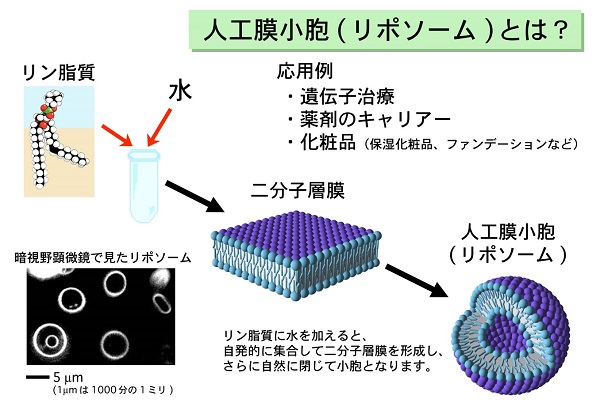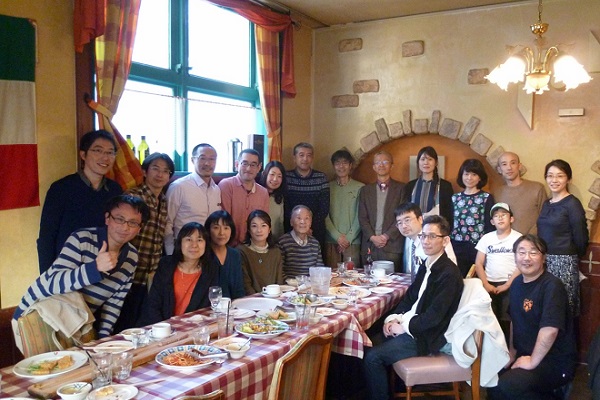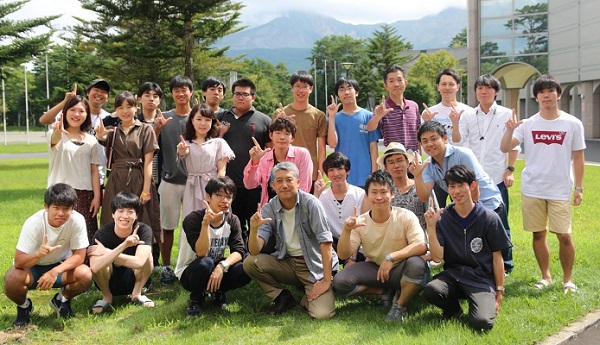reseach
Tackling the clarification of biological mechanisms under the theme of cell reconstruction
Tomoyuki Kaneko, Professor
Department of Frontier Bioscience, Faculty of Bioscience and Applied Chemistry
Posted Jun.8,2021
Faculty Profile
Professor Tomoyuki Kaneko studies the reconstruction of cells by using their elements. His study of liposome and cardiomyocytes is drawing a great deal of interest and is expected to be applied to aesthetic and medical fields.
Elucidating the functions of cells and contributing to the development of medical care
I am engaged in a study under the theme of cell reconstruction. It involves reconstructing not only cells but also tissues and organs by applying of the functions of cells.
My lifework is a study of liposome. Liposome is a spherical capsule covered by an artificial membrane formed by phospholipids. Since it can confine components in it, liposome is expected to be applied to aesthetic and medical fields. When an antibody that recognizes cancer cells is bound to liposome that encapsulates an anti-cancer agent and the liposome is administered to a patient, the antibody adheres only to the cancer cells in the body, and the anti-cancer agent can act only on the cancer cells. (This is called a drug delivery system.) In addition to liposome with supportive functions, I pursue my study to create autonomic liposome that can detect cancer cells as foreign substances in the body and consume them.
In addition, I am conducting a study on a pseudo-heart that artificially reproduces the structure of the real organ by constructing a cell network with cardiomyocytes placed on an electrode substrate. When medicine is administered to the pseudo-heart and reaction is measured, we can see the burden or effect on the heart. In this way, the efficacy of a new drug and presence of adverse drug reactions may be determined in advance. This study is expected to be put into practice in the near future.
It would be my great pleasure if a life-science study like this leads to applications in the medical and pharmaceutical fields, contributes to treatments, and reduces risks in medications. I will further pursue new possibilities of cells.

Formation process of liposome. When water is added to phospholipids forming biological membranes, phospholipids spontaneously gather to form a vesicle of artificial membrane (liposome).
I found my life’s work under the guidance of a mentor I met unexpectedly
My path as a researcher has not been a smooth one, and I’ve had many failures and made many errors. However, some strange chemistry worked to guide me in the course of research. The best example is an encounter with my mentor.
I vaguely hoped to produce cells by myself and to step closer to understanding the origin of life when I was in high school. I majored in molecular biology at university to learn more about cells. When I entered graduate school, I heard that my professor was about to retire. I was concerned about the many difficulties ahead. However, his successor was Professor Hirokazu Hotani, a leader in the field of biophysics. He became my supervisor.
To my surprise, Professor Hotani decided to hand over his highly acclaimed research to his assistants and to start new research. His new subject was liposome, which was the challenge to create new cells that I had been longing for.
Professor Hotani offered me work as a researcher on a national project in which people from different departments of several different universities participated. It is a memorable experience. I visited laboratories at the faculties of engineering and medicine at other universities, and felt as if they spoke different languages from the faculty of science. It was like being lost in another dimension. However, every experience during the project remarkably contributed to the current research. I communicated with multinational researchers in English only at laboratories of a faculty of engineering, and witnessed pathology at laboratories of a faculty of medicine.
My original hope for the creation of cells is still a far off goal, and will take a significant time to achieve. However, I hope it can be achieved by someone, someday. To keep our work moving without interruption until that dream is achieved, I will hand over the ambition and passion that my mentor gave to me to the next generation.

The first and last alumni association after the retirement of Professor Hotani (center of the photo). Many people gathered for Professor Hotani. He was respected and loved by many people. It was like a place for a cross-cultural exchange.
Developing your own practical wisdom feeling restricted by an unrestricted environment
Professor Hotani had an enormous influence on me. The traces of his mindset can be found in my research and also in my attitude toward students as an educator.
For example, I stay close with students by using nicknames with each other and remain aware of supervising and supporting students without limiting their freedom and independence in learning.
I do not limit the research themes that students want to tackle. In recent years, my scope of interest has extended to macrophages (a type of white blood cell with a high capability to surround and kill foreign bodies such as bacteria entering the human body) and nerve cells, thanks to not having restrictions on deciding themes.
Recent students, however, tend to be unable to do anything when they themselves are put in charge of judgment and other options. It is as if they feel anxious or scared, restricted by an unrestricted environment. Some students confessed that they could easily do everything if they received direct instructions. Students must determine what to do and how to act, and I must trust their judgments. Each piece of freedom will lead to the practical wisdom with which they can establish their own futures. I hope they develop their own practical wisdom.

Group photo with my students at a summer seminar camp in 2019 (cancelled in 2020) We formed a letter “L” with our thumbs and forefingers, showing the lab’s nickname LaRC as a trademark pose in group photos.
Tomoyuki Kaneko, Professor
Department of Frontier Bioscience, Faculty of Bioscience and Applied Chemistry
Born in Yamagata Prefecture in 1970. Graduated from the Department of Molecular Biology, School of Science, Nagoya University and completed the Division of Molecular Biology, Graduate School of Science, Nagoya University. PhD (Science). Served as the associate professor at the Institute of Biomaterials and Bioengineering, Tokyo Medical and Dental University and took up the post of a part-time lecturer of the Faculty of Science and Engineering of Hosei University in 2008. Appointed to a professorship of the Department of Frontier Bioscience, Faculty of Bioscience and Applied Chemistry in 2013 to the present. Member of the American Society for Cell Biology, the Biophysical Society, and the Biophysical Society of Japan.

